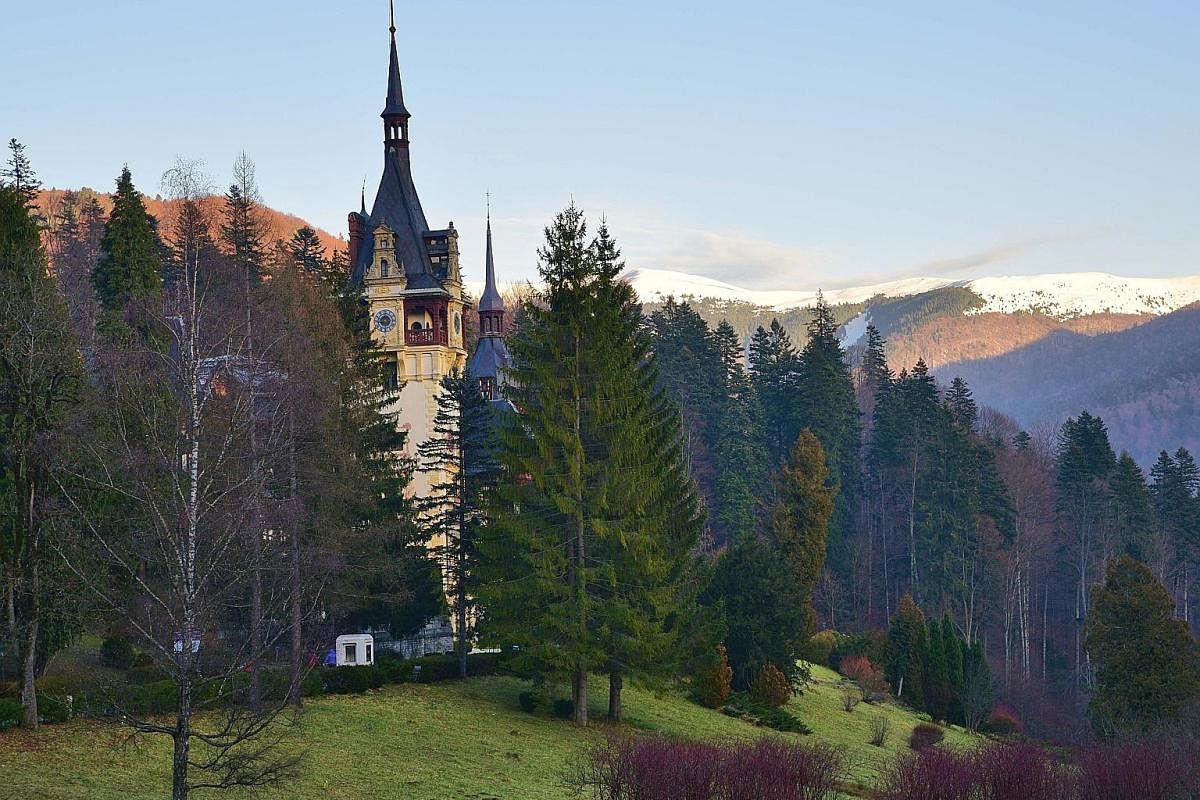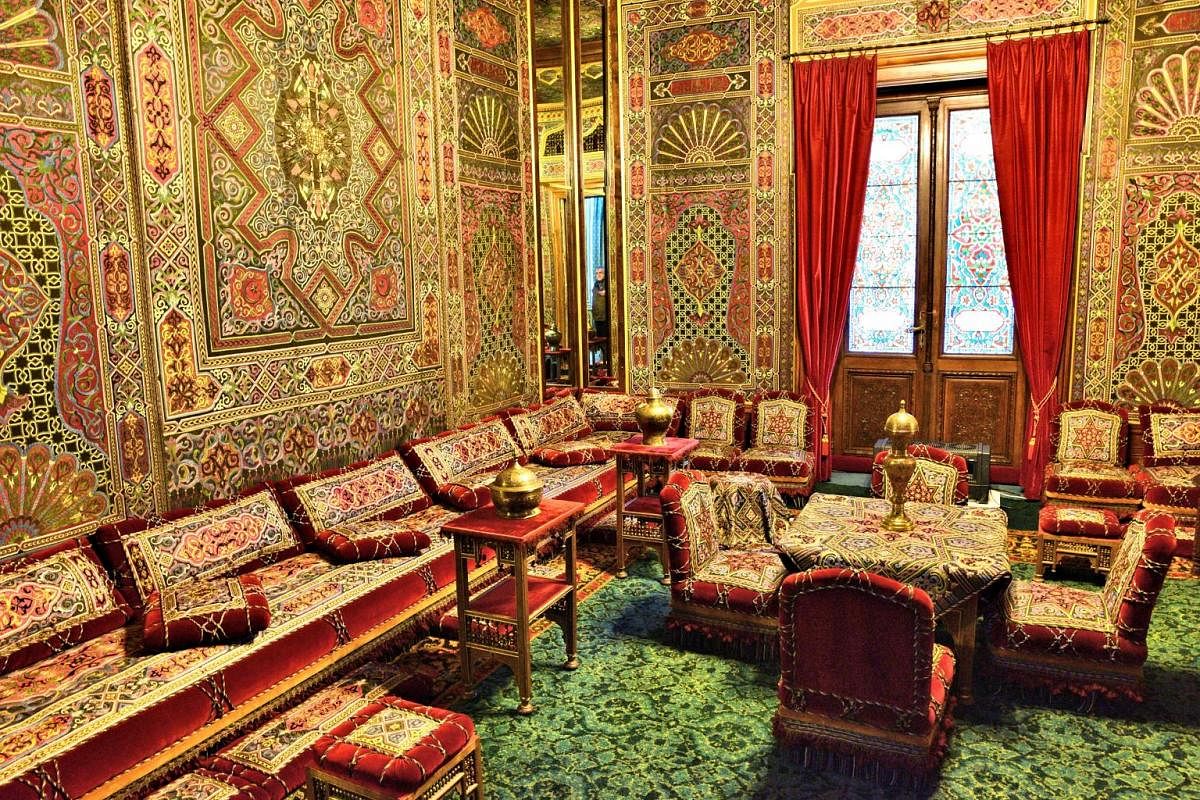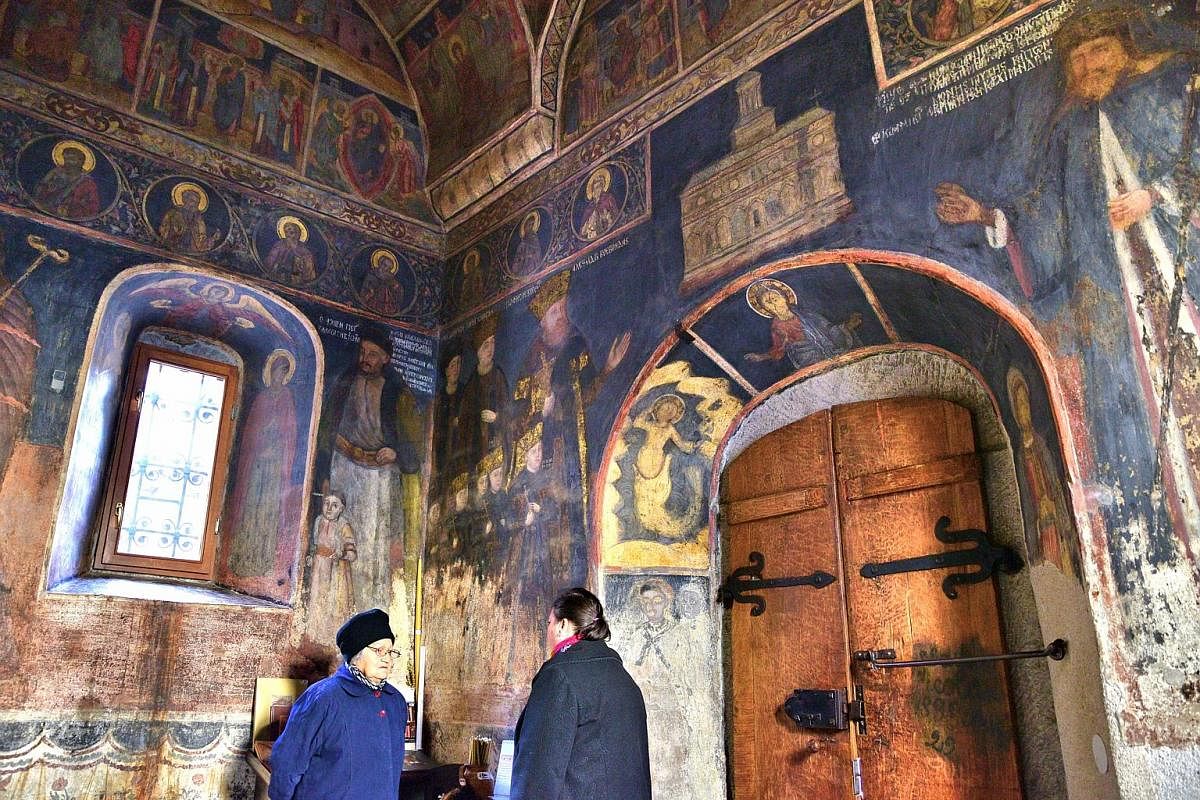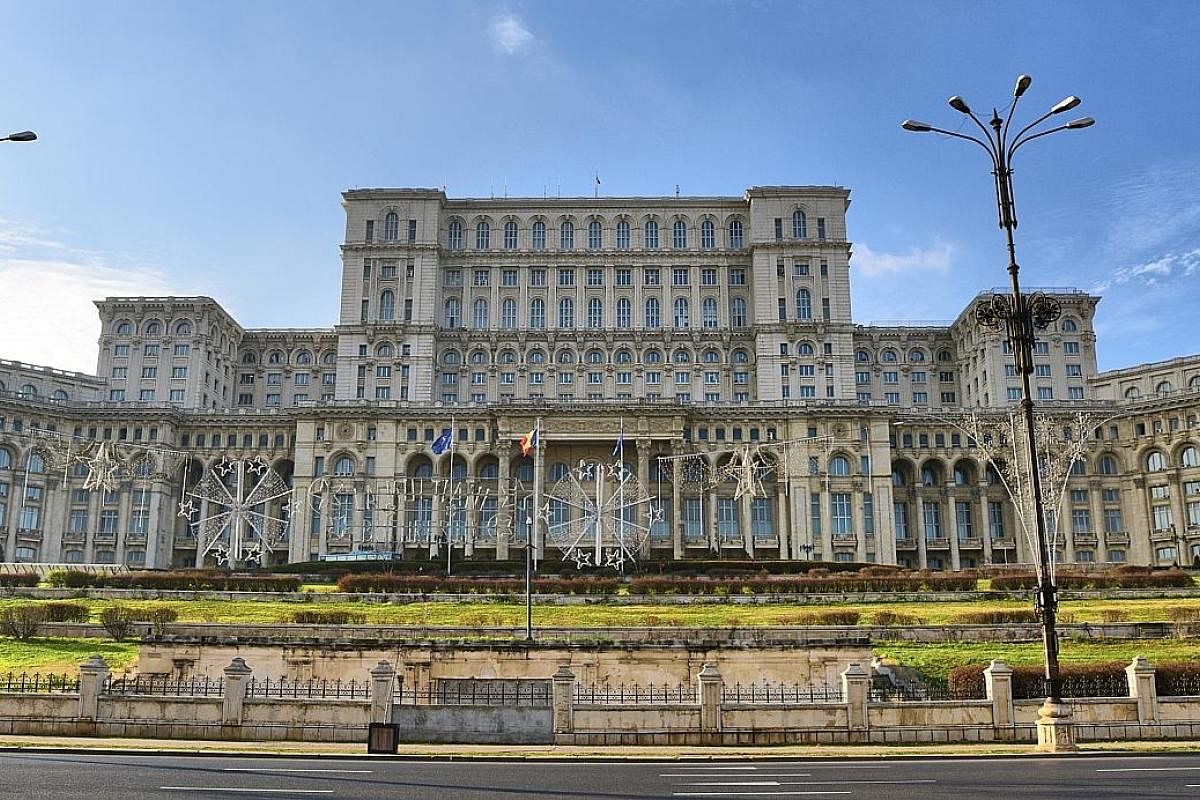-

GETTING THERE
There is no direct flight between Singapore and Romania. The quickest and easiest way to reach Romania is to transfer in either Dubai or Abu Dhabi - both air hubs in the United Arab Emirates are about five hours by air from the Romanian capital Bucharest.
From Bucharest, there are regular trains that head into the Transylvanian mountains, to beautiful places such as Sinaia and Brasov.
TIPS
•The Palace of the Parliament in Bucharest is accessible only via group tours. Try to join the first tour at 9am, which is less crowded.
•There are regular buses from Bucharest to Sinaia and Brasov, but the best way to complete this route is undoubtedly by train, with the large cabin windows offering great views of the mountain scenery.
History that draws wonder and disgust
Some of Romania's most significant buildings tell the story of the European country's mysterious and dense past




Looming above me in downtown Bucharest is a hulking concrete beast. Many structures throughout the world may stun with their beauty, but far fewer, like the Palace of the Parliament in the Romanian capital, leave you shocked by their size.
A monument to the greed and pomposity of former Romanian dictator Nicolae Ceausescu, the Parliament cost $4.5 billion and took 13 years to build, involving more than 700 architects and 20,000 construction workers.
The Guinness Book of World Records has crowned it the world's heaviest building - thanks to its 330,000 sq m of marble, 900,000 sq m of wood and 700,000 tonnes of steel and bronze.
Those numbers are so huge, they almost lose their meaning. What is easier to understand is the massive waste of public funds. This one building perfectly sums up Ceausescu, the communist leader who held the nation in his firm grip from 1965 until 1989, when finally its people had enough.
Initially, he was a popular figure, thanks to his nationalistic political policies.
Romania had been a satellite of the Soviet Union since 1948, but he energised his supporters by moving the country away from Russia and reasserting independence.
But he became openly corrupt, funnelling public funds into his own causes and giving lucrative state jobs to his relatives.
Public sentiment swung heavily against him in the late 1970s. Then, in 1984, he thumbed his nose at his constituents once more, embarking on the Parliament building project.
At a time when many Romanians were living in poverty, he poured ungodly sums of money into the ultimate vanity project. He also had a swathe of downtown Bucharest razed to make room for the complex.
Then he made himself an outright villain. In December 1989, his security guards fired into crowds of protesters at his behest, prompting not only civilians, but also the Romanian army to turn against him. On Christmas Day 1989, he was captured and executed.
He left behind the Parliament building, which was only two-thirds completed.
This tumultuous reign of Ceausescu is being explained to me during a guided group tour of the building, which is now the finished article.
As I wander through the opulent complex, which still functions as a working Parliament, two emotions are doing battle - wonder and disgust.
I am beguiled by the exquisite craftsmanship and sheer enormity of the Parliament, with its endless marble, magnificent chandeliers, ornate statues and intricate wood carvings.
At the same time, I feel increasingly sickened by the tale of Ceausescu and the manner in which he set this nation back decades.
The next day, I can no longer hold in this uneasy feeling. On the train to Sinaia, a ski resort in the Transylvanian mountains, I am midway through a conversation with two young men, Andrei and George, when I blurt out my distaste for Ceausescu.
Both men look shocked. I panic, fearing that I might have insulted them, that public condemnation of Ceausescu may be taboo.
"What does 'scum' mean?" George asks me.
I realise they are not upset by my sentiments, but, rather, confused by my terminology.
"A really awful person," I reply, earning nods from both men. They say they are glad to have been born after Ceausescu was gone. That was a dark era - Romania is a far different place now, Andrei tells me.
Indeed it is. After the death of Ceausescu, Romania swiftly shed communism, transitioned into the free market and its economy flourished.
Then, in 2004, it was accepted into the European Union. Romania is in a healthy position, perhaps the healthiest it has been since the halcyon days of my next destination, Sinaia.
I am in Sinaia to see the town's gorgeous Peles Castle, built in the late 1800s for one of Romania's most revered figures, King Carol I.
His standing in Romania is at the opposite end of the spectrum to Ceausescu's. It was under his rule in 1877 that Romania fought for and won independence after almost 500 years under the control of the vast and powerful Ottoman Empire.
Momentously, the country emerged from this war as the Kingdom of Romania.
A castle as grand as Peles seems like a fair reward for King Carol I. Its German Renaissance-inspired facade is so dramatic, it manages to distract me from the castle's remarkable backdrop - the snowy Transylvanian mountains.
It is early December, the start of winter. Combined with Sinaia's lofty altitude of 900m above sea level, this ensures some frosty weather.
It seems as if every other tourist has headed for its popular snowfields. I am almost alone inside this dark, cavernous castle.
Peles has perhaps the most unusual interior of any building I have ever stepped foot in. Its architecture is a curious melange of Gothic, Italian Renaissance, German Baroque and French Rococo styles.
It looks like the kind of eerie castle that would feature in a horror movie. Embellishing its more than 160 rooms are standing suits of armour, horrific mediaeval weapons, statues of fierce warriors and ghoulish wooden carvings.
While King Carol I led Romania back to independence, it was the Romanian Orthodox church that kept the country's people together during its long occupation by the Ottoman Empire.
Romania became fractured over this period and split up into multiple principalities. There was a risk its people would lose a collective sense of Romanian identity. But the presence of the Orthodox church helped keep this identity alive through those turbulent centuries.
Now this religion remains influential, with about 86 per cent of citizens identifying as Romanian Orthodox.
While foreign powers were working to divide Romania, the Orthodox church maintained its presence, building many new chapels.
After leaving Sinaia and returning to the capital, I decide to spend my final day admiring four Orthodox churches in the Old Town of Bucharest. Orthodox churches tend to have dramatic interiors. But it is the simplest one I visit which strikes me the most.
I suddenly realise I have been staring for at least 10 minutes at the time-worn murals on the walls inside Stavropoleos Monastery Church.
The church, which adjoins the remains of a monastery, is petite and unobtrusive. There is barely enough room inside to house a congregation of a dozen worshippers.
Regardless, there is something about Stavropoleos which goes beyond the beauty of its intricate murals. It is a symbol of the spirit of the Romanian people.
It was constructed in 1724 at the height of the Ottoman occupation of Romania. In building this majestic structure, the Orthodox church was helping to bind together the Romanians. The same people that King Carol I would eventually free and the same people who would later be exploited by Ceausescu.
Romania's history is intimidatingly dense. But its most important structures help the traveller to decode and demystify this fascinating past.
•The writer is an Australian photojournalist who divides his time between Ireland and Thailand.
Join ST's Telegram channel and get the latest breaking news delivered to you.
A version of this article appeared in the print edition of The Sunday Times on November 19, 2017, with the headline History that draws wonder and disgust. Subscribe
